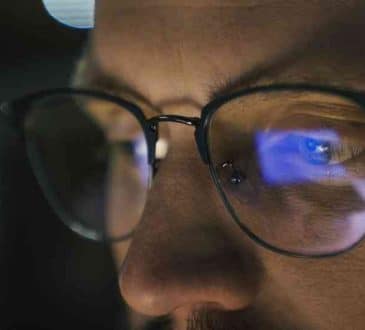Why digital transformation needs risk management

Digital presents many opportunities but also heightened risks. Risks vary to those in traditional business as issues can be rapidly exacerbated due to the scale of technology. Organisations run the risk of being digitally dumb or numb. Dumb being a poorly thought through the endeavour. Numb being ignorant of the potential of Digital within its industry and the consequences for their business.
Compounding the dilemma is McKinsey’s research on Digital transformation efforts of organizations with only 15% being successful and less than 10% sustaining the benefits of their Digital transformation beyond a year. The approach of being a bystander is not an option, so what can you do?
- Seek to be in a state of constant transition
Adopting an approach of learning rather than knowing will enable your organization to grow as Digital evolves. Transformations have a range of milestones, generally determined at the time of its inception, these are often not relevant upon completion. Rather than initiating a large-scale transformation, encourage the employee population to be in continuous education, applying the learnings to how they approach their role and sharing it with others. - Analyze and rationalize the existing work
The existing work within your organization is not the future. Many employees are rewarded for the volume of work they complete rather than the value of it. Technology has enabled non-value-adding work to continue. There are various types of work:
Isolated and reactive work completed by an employee. One or few employees know of the work. When others discover the work exists, they are surprised – I can’t believe we are still doing that! Generally, others were aware and probably wanted to address it, too; however, there were more pressing priorities.
Connected and reactive employees. A collective consensus that is internally focussed, creating a sense of comfort – this is the work we do here, and this is how! A vulnerable organization as they exclude things that could be of value.
Isolated and proactive employee. Employees are doing what they think everyone else should be, sometimes secretly sponsored by their manager. The effort is unlikely to realise its potential; the ideas may be valuable if they are evolved with others.
Organizations need to change the approach to work; the above types of work will influence Digital potential. Organizations need to stop, improve and share work — ultimately rewarding employees for doing less but more valuable work and involving communities when appropriate. - Transparency of existing technology
Digital has a dependency on the technology team, who should not be the sole custodian at the most may facilitate Digital. Leaders are to build cross-function teams to initiate, refine and evolve Digital efforts. Further, the technology team is to be transparent of the capability they are delivering for the organization, i.e. customer data is now in one location, enabling interrogation to better match services or products. - Establish a risk capability
The risk capability of employees correlates with Digital progress. Too few people will result in a block log of endeavors for assessment, or endeavors progressed without assessment. A risk capable employee population will; assess risks, implement controls, and mitigate issues. The collective group should pursue the implementation of controls that are primary (i.e. from service providers), possibly leveraged (i.e. from specialist teams in the organization) or if neither of these is available, compensating (a team implements locally, not ideal). - Balance your approach to innovation
Seek to set the conditions for innovation by; encouraging and rewarding thought diversity, creating spaces for casual connections, assessing all ideas and progressing those selected with people who have business skills, build communities by connecting experts, and have a structured approach to creative collaboration.
Tactical innovation is across an organization generally with initiatives completed in a year. These include; eliminating some tasks and automating the remaining if possible, create standard processes avoiding localization by teams, identifying intelligent insights within existing data, and creating blended resource teams of vendors with employees.
Strategic innovation is over many years. What are longer-term dreams? Identify specialist employees and trusted partners to refine, evolve and contribute to these. Tesla’s goal has remained the same for a decade: “to accelerate the advent of sustainable transport by bringing compelling mass-market electric cars to market as soon as possible.” - Digital endeavors combine timing, differentiation, and activities
Before initiating a digital endeavor, three factors are to be considered in addition to the earlier points. Market, what season is the market? Early markets may be complemented by Digital information, mature markets by information with a transaction capability, and those enter their final phase could be avoided entirely by Digital with investment being better made elsewhere.
Differentiation, the objective is to create customer stickiness. Being the cheapest is not sustainable and being mindful of who owns the customer in partnership arrangements is critical. Customers can now search for everything; your brand and reputation are not as important as it once was. Stickiness is created when a customer selects a product or service and becomes immersed with associated services, and your mobile phone is a great example. Stickiness also occurs when the effort to change is considerable, such as your mortgage.
Then, and only then, after considering these factors, determine your approach. There are three clear stages of Digital; content and customer’s interacting with it, transaction capability based on the interaction that customers found valuable and then if both are sustainable; the creation of a platform, a Digital ecosystem as part of your business.
Digital organizational risks are broad and can be rapidly amplified. Including; how endeavors are initiated (transformations generally fail), the existing work within and people’s approach to it, and technology capability. Consider the risk capability of employees and setting conditions for innovation with a balance between tactical and strategic objectives. Finally assess the market assessment, points of sustainable differentiation to determine the course of action.
Written by David Banger.
Don’t miss: For those who are planning their next business trip, read on for our list of the world’s best cities for bleisure travelers. As you continue to travel, we continue to listen: Here are the best hotels for business travelers to stay in Athens, Crete, Kefalonia Island, Corfu Island, Santorini Island, Halkidiki, Mykonos Island, Rhodes Island. Skiathos Island, Elounda (Crete) Kissamos (Crete) Agios Nikolaos (Crete), Hersonissos (Crete), Rethimno (Crete) Plakias (Crete) Malia (Crete) Palaiochora (Crete) Heraklion (Crete) Chania (Crete) .
Add CEOWORLD magazine to your Google News feed.
Follow CEOWORLD magazine headlines on: Google News, LinkedIn, Twitter, and Facebook.
Copyright 2024 The CEOWORLD magazine. All rights reserved. This material (and any extract from it) must not be copied, redistributed or placed on any website, without CEOWORLD magazine' prior written consent. For media queries, please contact: info@ceoworld.biz








